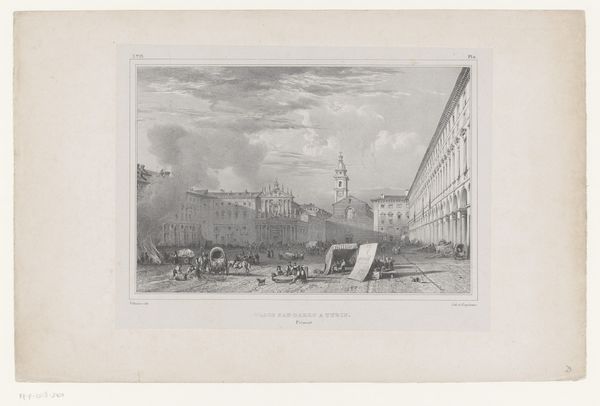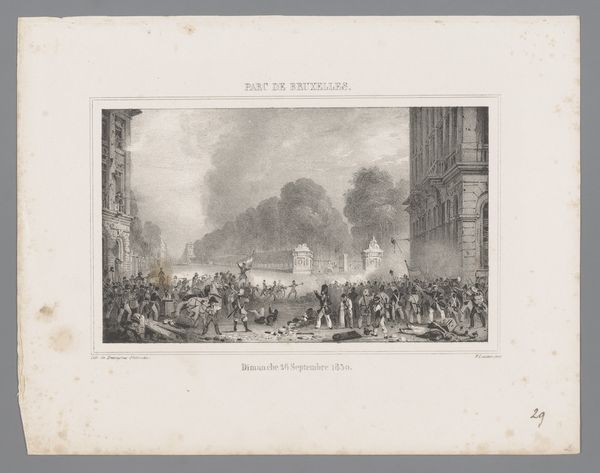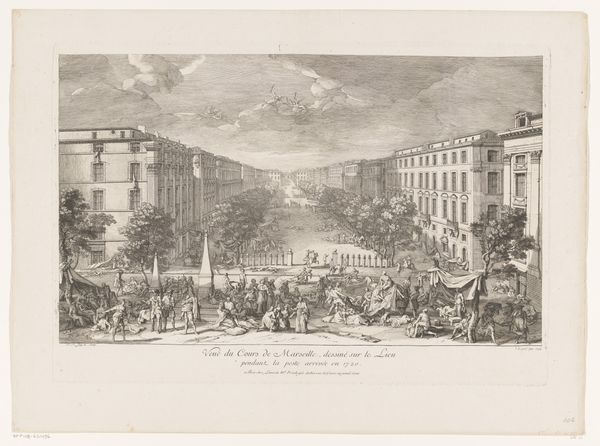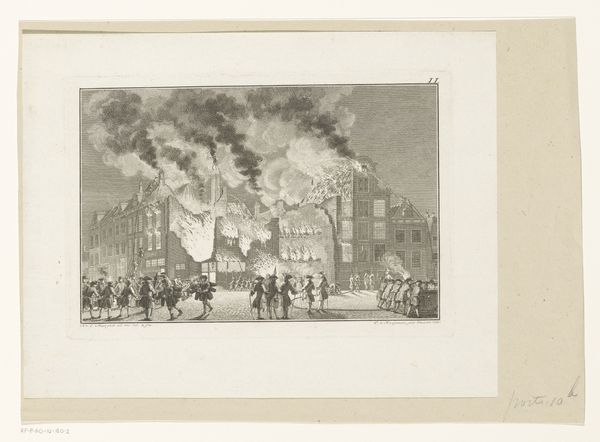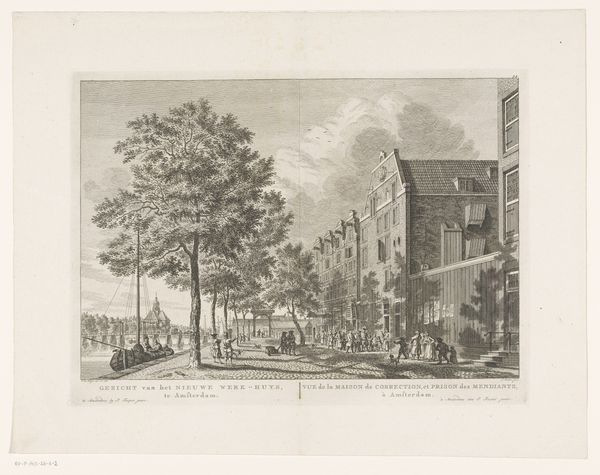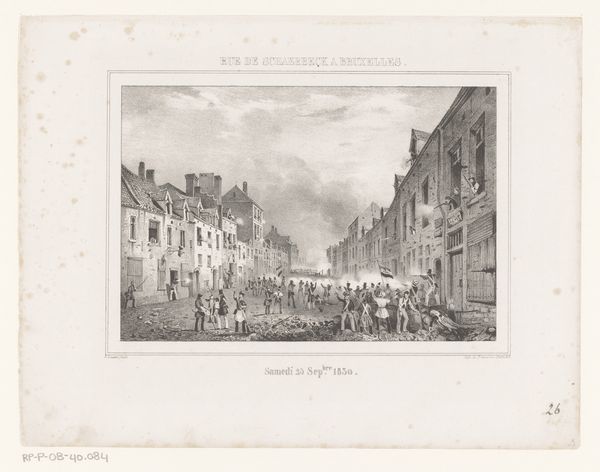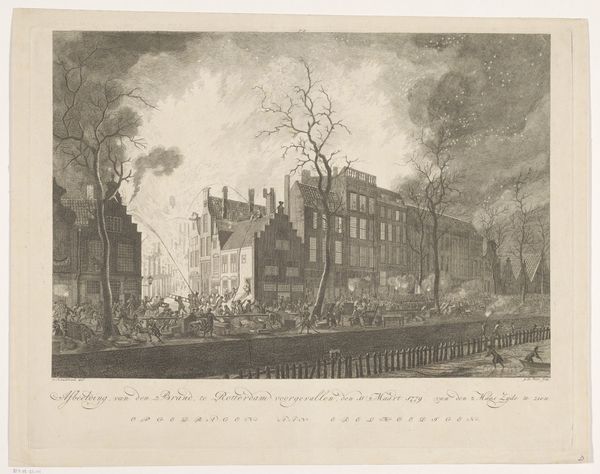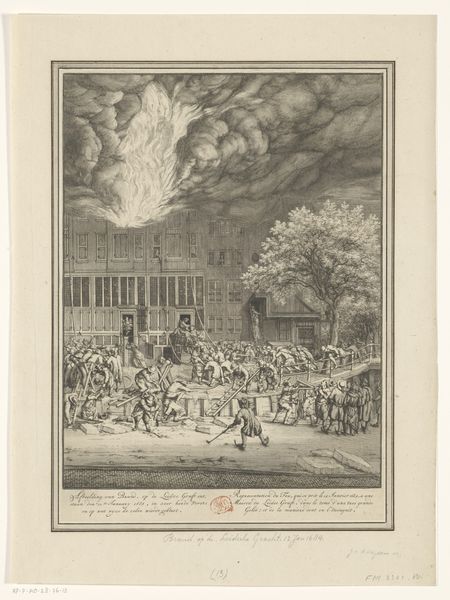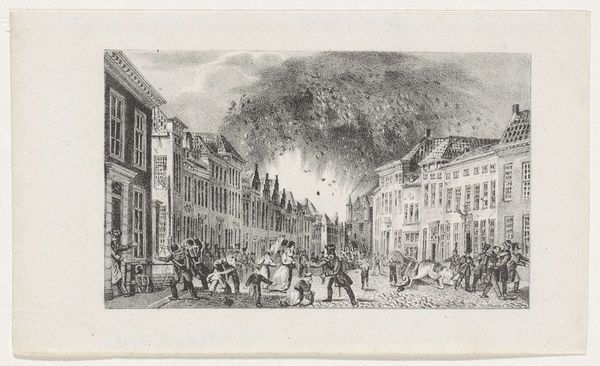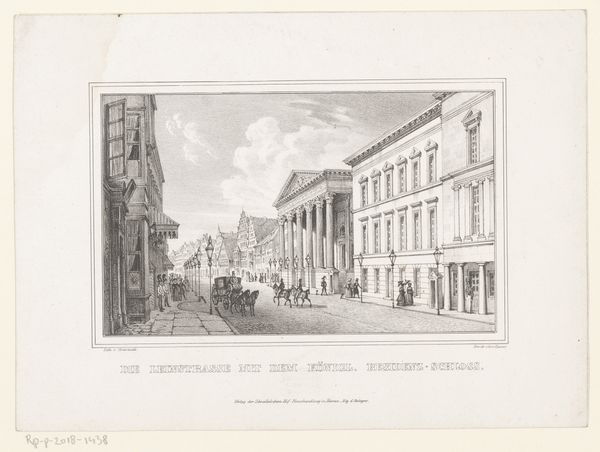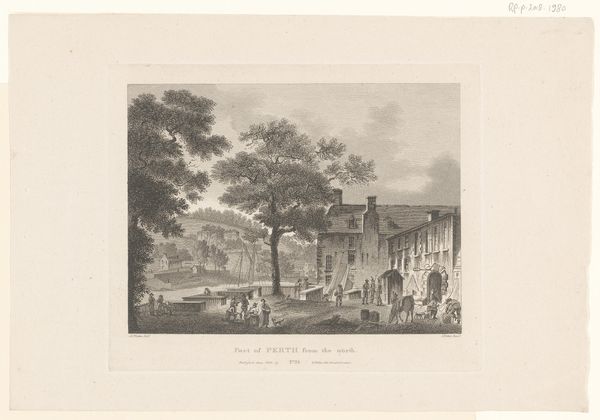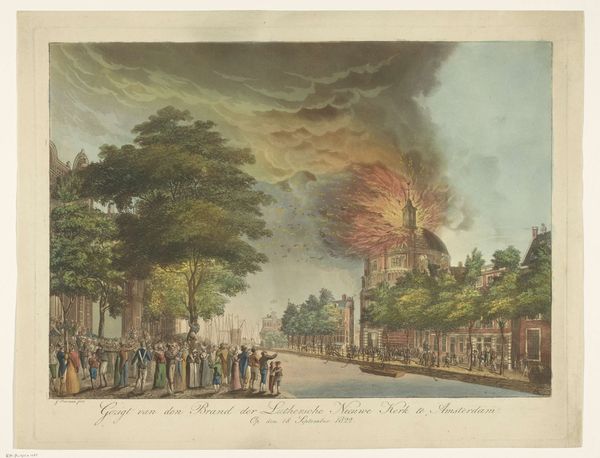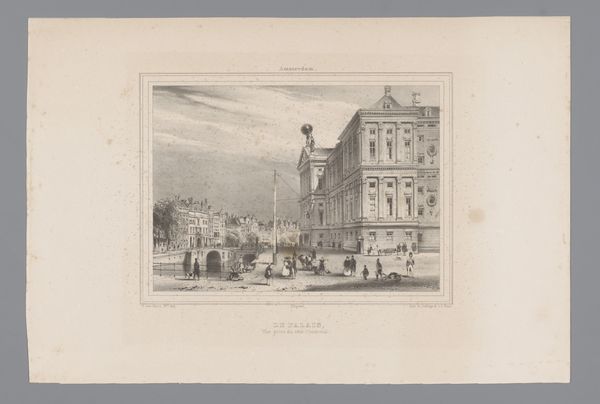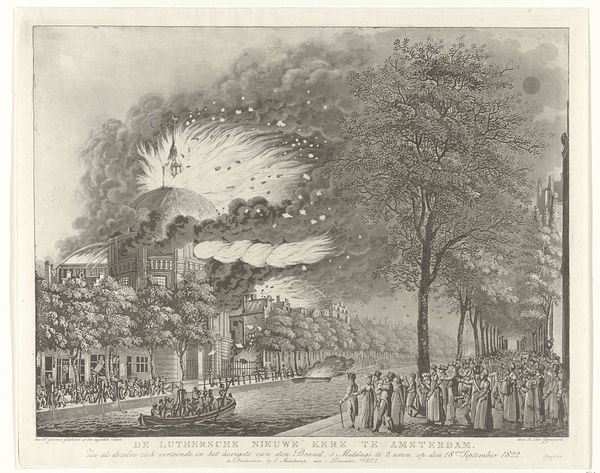
print, engraving
#
neoclassicism
# print
#
old engraving style
#
white palette
#
cityscape
#
history-painting
#
street
#
engraving
#
realism
Dimensions: height 380 mm, width 475 mm
Copyright: Rijks Museum: Open Domain
Curator: Editor: Here we have "Ontploffing van het laboratorium in Bergen op Zoom," an engraving from 1831, housed at the Rijksmuseum. It's quite striking; the chaotic scene depicted feels so at odds with the almost clinical precision of the engraving technique. How should we interpret this depiction of what looks like a fairly devastating explosion? Curator: What stands out to me is how the printmaking process itself reflects the industrial and scientific advancements that likely led to the laboratory explosion in the first place. Consider the meticulous labor involved in creating this engraving, each line carefully etched – it mirrors the scientific precision valued at the time, doesn't it? What material conditions facilitated the making and distribution of such prints? Editor: That's an interesting connection I hadn’t considered. It speaks to a wider accessibility to visual media. So, the means of production affect our reading of the image, making us consider the historical and social context of both the depicted event and the artwork's creation. It also pushes us to see art, even history paintings like this, as something crafted from specific materials using very particular, available processes. It wasn't a photograph. Curator: Precisely. Think about the role of the printing press, the engraver’s workshop, the very materiality of paper and ink. These factors influenced who saw this image, and what it meant to them. What do you suppose a wider distribution and lower cost of this medium does to notions of fine art during that period? Editor: So it democratized visual information... And by examining the print as a mass-produced object, we can begin to unpack the social and economic forces at play in early 19th century Netherlands. I suppose looking at how many copies were made, or at variations in printing quality over time, might even reveal different target audiences. I'm really beginning to think about these art objects as cultural commodities. Curator: Exactly! By emphasizing process, materials and their impact, it really does unlock a deeper appreciation of the artwork, far beyond the simple depiction of an event. Editor: Thank you! Thinking of artistic creation in material terms definitely opens my eyes to the wider circumstances surrounding an image like this. I never thought about the cultural implications of engravings before!
Comments
No comments
Be the first to comment and join the conversation on the ultimate creative platform.
